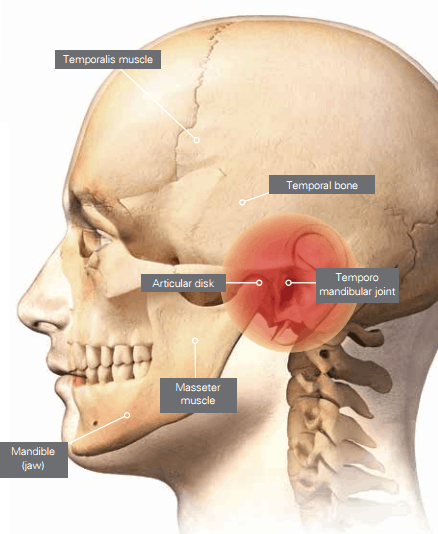4 Jaw-dropping Facts about TMD

Ever suffered from any of the following symptoms before?
- Difficulty chewing
- Toothache, earache or swelling
- Popping, clicking or grating sounds in the jaw joint when opening or closing your mouth
- Inability to open your mouth fully
- Pain or discomfort in the face, jaw joint area
If your answer is yes, you may be suffering from Temporomandibular Joint Disorder (TMD).
TMD is a collective term embracing a group of dental and medical conditions that involve the jaw joints (also known as the temporomandibular joint), chewing muscles and associated structures. It is a major cause of non-dental facial pain. Many people have the signs and symptoms of TMD but may not have been diagnosed.
TMD is more common than you think
About one-third of the adult population have symptoms of TMD and 40-60 per cent of the population have signs of it. Based on the findings from the first-ever large scale TMD study named Orofacial Pain Prospective Evaluation and Risk Assessment (OPPERA), TMD is three times more common than we thought. In the study, the people who were recruited started out without TMD. However, over the course of the study, it was noted that 3.9 per cent of them developed TMD every year, until a total of 9.5 per cent of them were affected.
There are many causes to TMD
The four most common causes of TMD include bruxism (excessive grinding or clenching of teeth), trauma to the face or jaws, degenerative arthritic conditions or degenerative joint diseases, and malocclusion (having poorly aligned or crooked teeth).
According to Dr Jeffrey Sng, Dental Specialist in Prosthodontics, Raffles Dental, stress, anxiety, and psychological conditions can also lead to bruxism, causing TMD. Although there are specific reasons for some cases of TMD, as a group, they have no common cause and are usually the result of multiple contributing factors.
The symptoms are often overlooked
The symptoms of TMD are similar to many conditions including toothache, sinus problems, arthritis, or gum disease. As a result, many sufferers of TMD go on with life misdiagnosed.
Common symptoms of TMD include:
- Headaches
- Ear pain, ringing in the ears
- Jaw pain
- Jaw joint sounds
- Jaw function difficulty
- Abnormal jaw opening
- Bite problems
- Neck and shoulder pain
TMD related pain, dysfunction and disability can significantly affect your quality of life.
Women are at a higher risk
Women have higher risk for longstanding TMD, and may explain the higher prevalence of women seeking care for TMD. According to some studies, close to 90 per cent of TMD sufferers are women of childbearing age. TMD also strikes more commonly in the group of people between 20 to 40 years old.
How is it treated?
Treatment largely depends on the kind of TMD that you are suffering from. Comprehensive history taking and physical examinations is essential for complete diagnosis. The goals of the treatment are to decrease pain, decrease adverse loading to jaw joints and muscles, restore function, restore normal daily activities and improve your quality of life.
Treatment usually begins with conservative therapies that do not invade the tissues of the face, jaw, or joints.
These include:
- Education and self-care
- Behaviour modification of harmful habits
- Psychotherapy including stress management and relaxation techniques
- Medications
- Dental splint therapy
If your disorder is longstanding and associated with major structural changes and/or prominent psychological distress and disability, jaw surgery, bite (occlusal) therapy, orthodontics and medical specialist referrals may be warranted.



